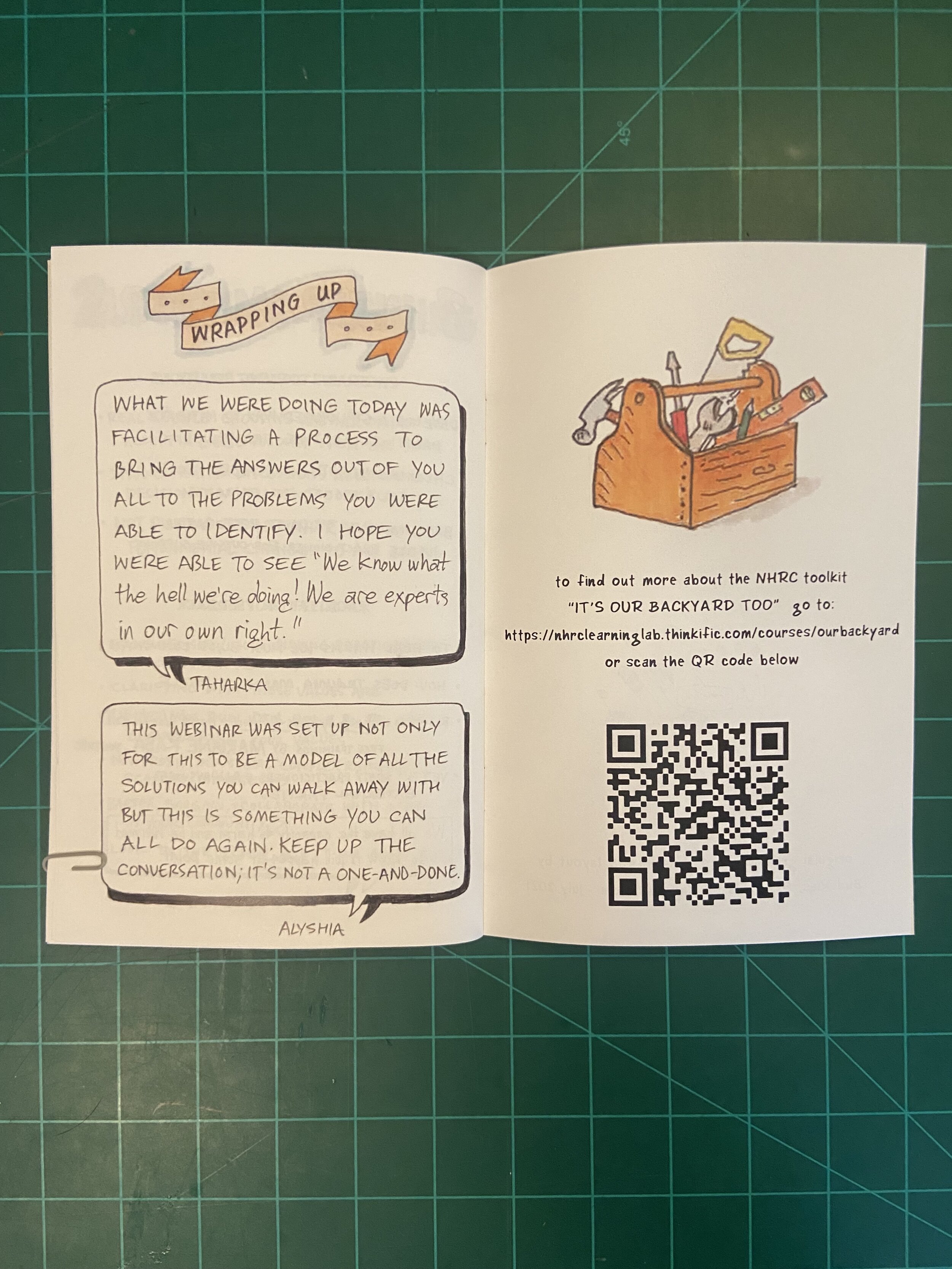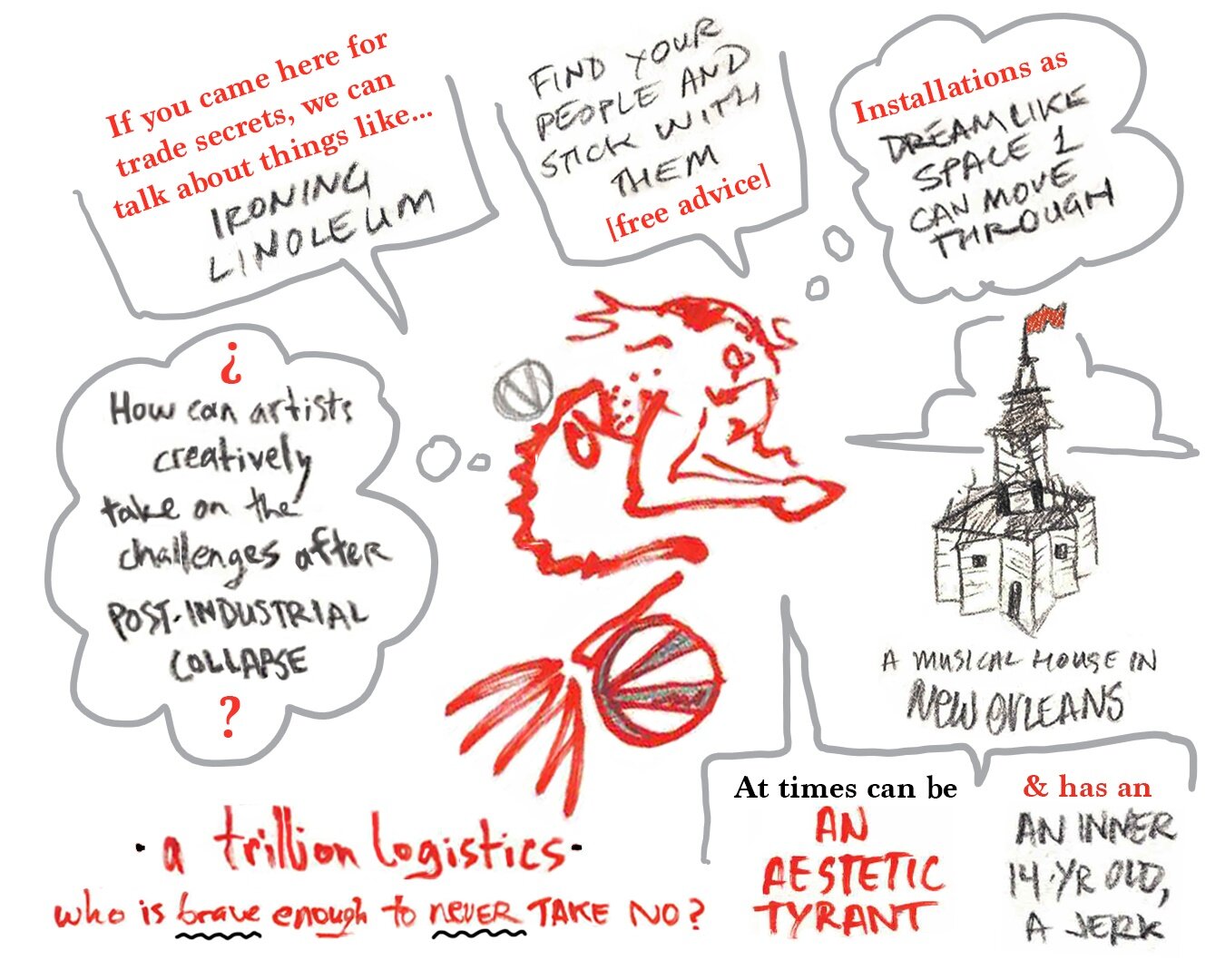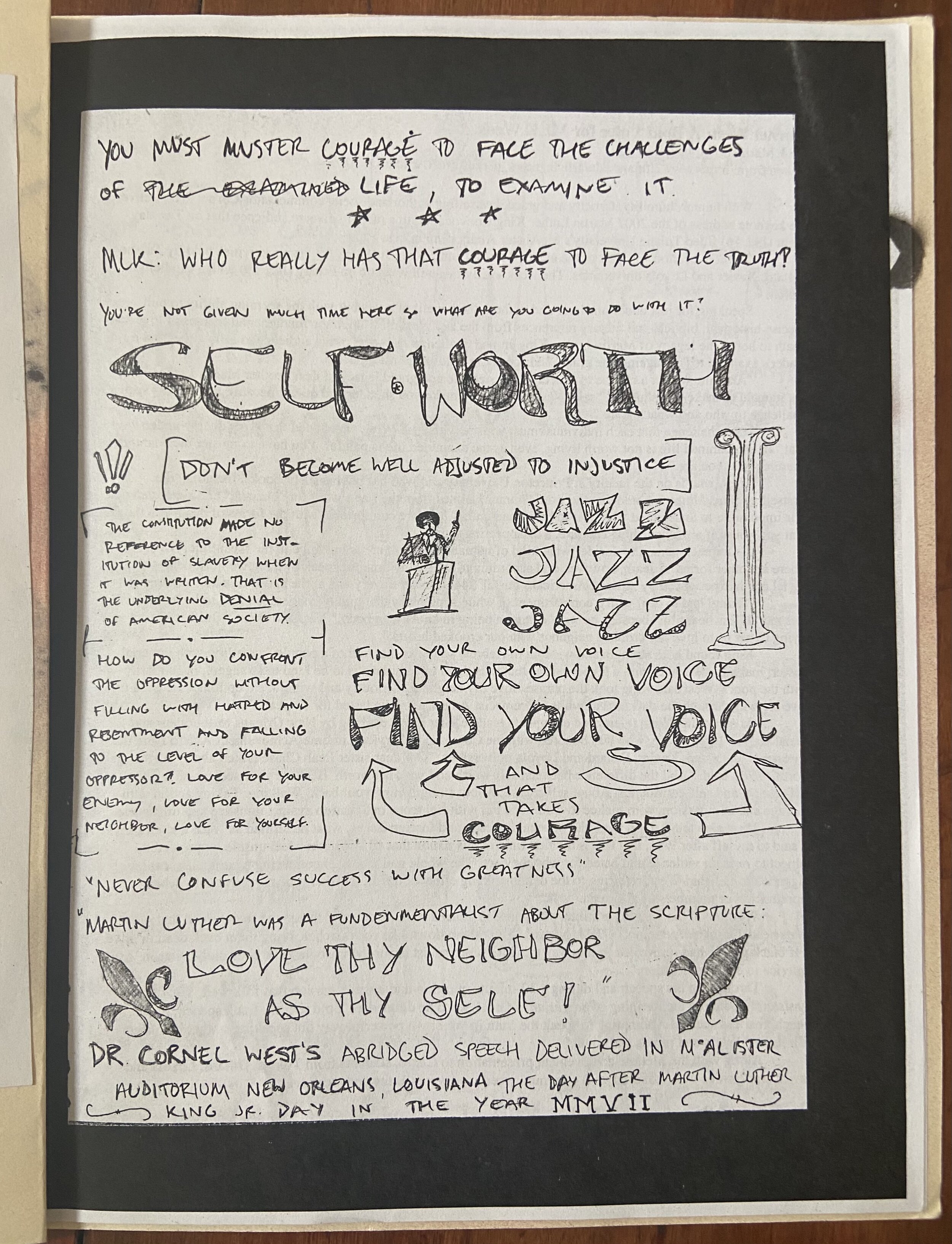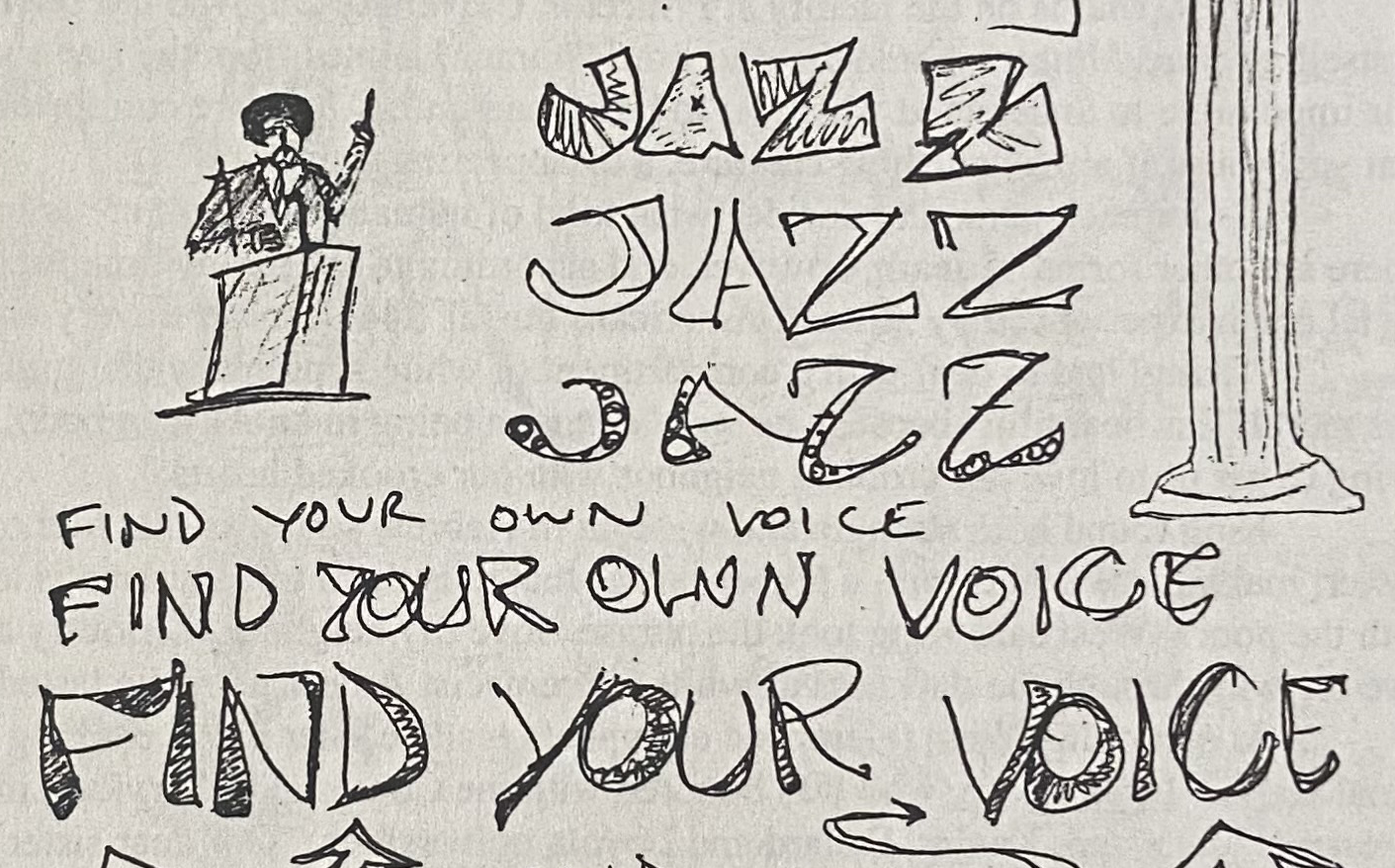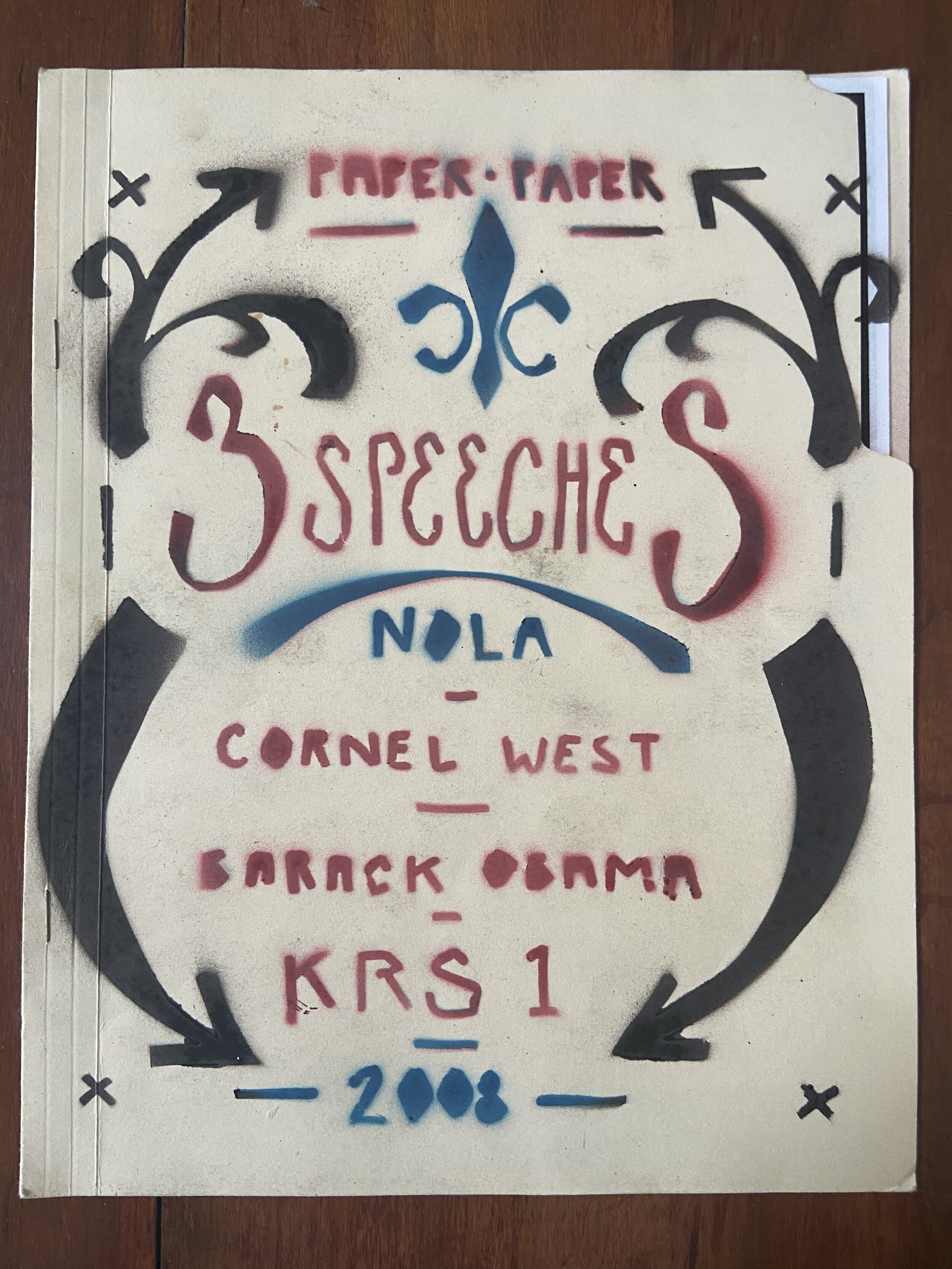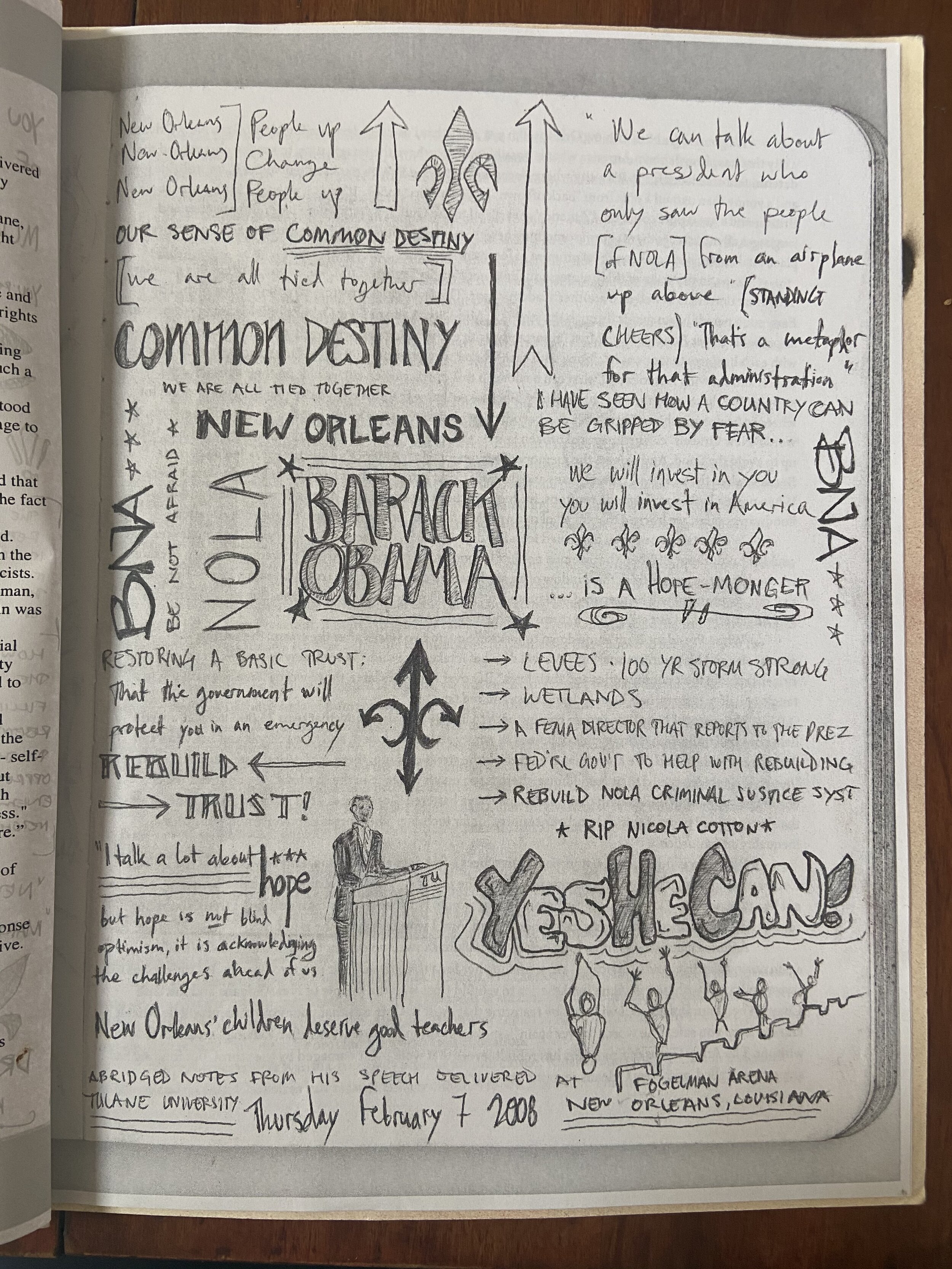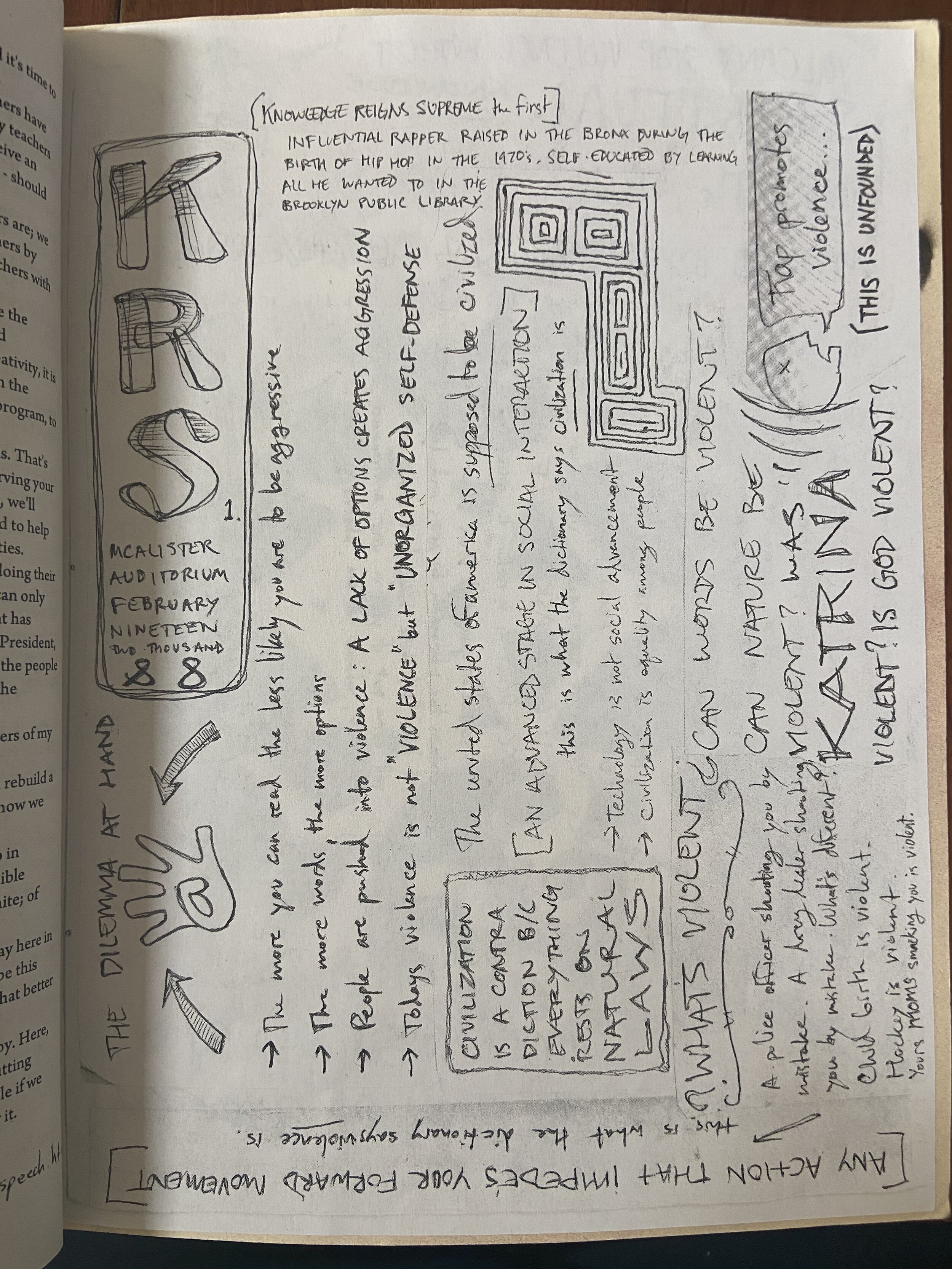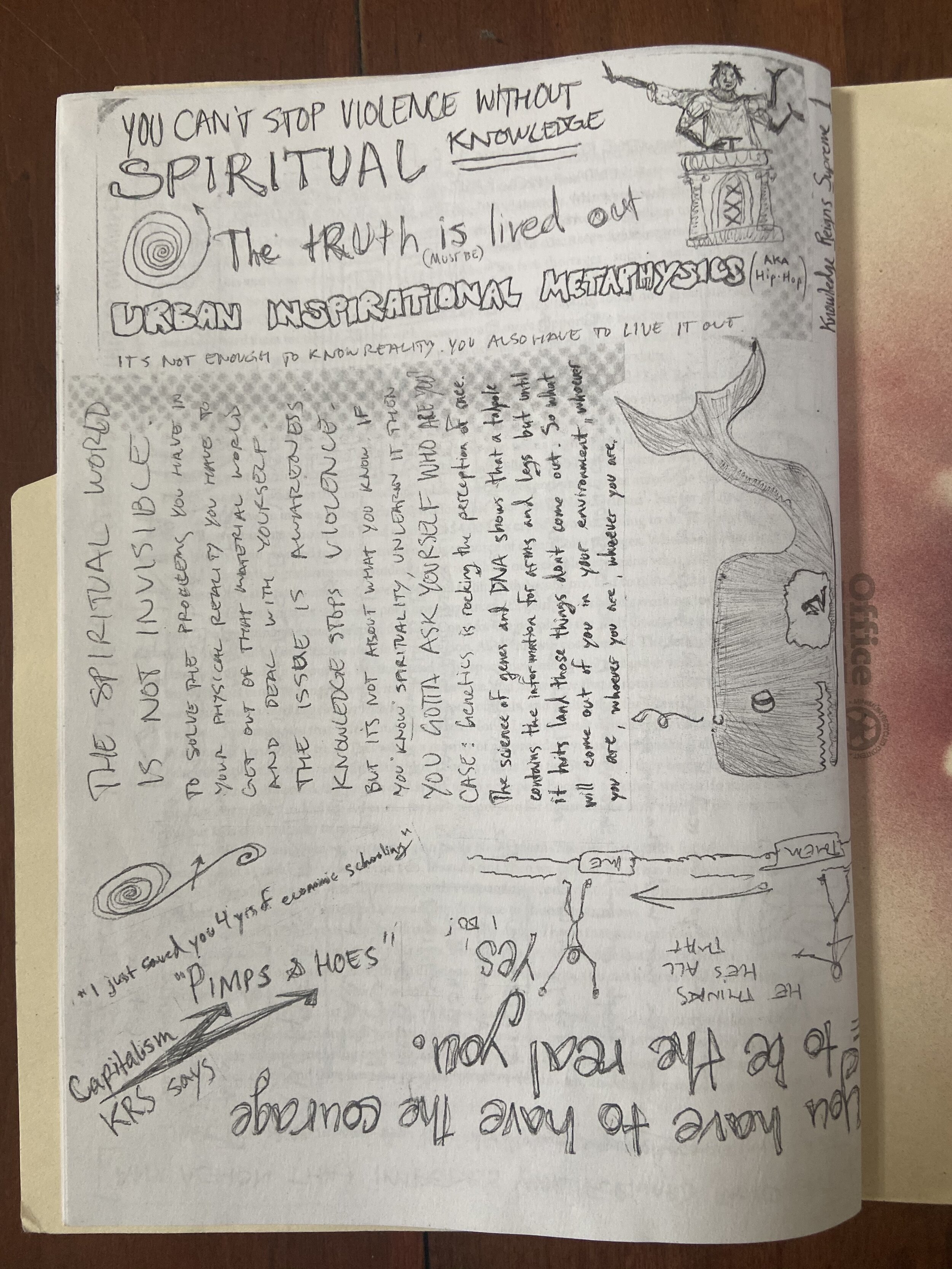[***Disclaimer: Here’s something from my personal vault that’s a bit different from my other graphic note in that it consists of some notes I took over a decade ago before I knew what “graphic notetaking” even was. I recently remembered i had these notes and began messing around with them to see if it was something I could reformat and publish. With that in mind, these notes are a bit looser and a lot rougher around the edges than my regular professional work today is. I kind of enjoy them for that reason though, in that they take me back to my time in New Orleans when it seemed world famous artists were just dropping into town every other month. I’m glad I took them down at the time I did and I’m glad to have finally done something with them now and I hope you enjoy them.]
Two years after I first began taking graphic notes at the lectures on campus, the art department at Tulane announced another upcoming speaker who I knew I didn’t want to miss. The artist Caledonia Curry, aka Swoon, known for her wheat paste cutouts on the streets of NYC and larger than life relief prints was a superstar in both contemporary museum exhibitions and the street art scene I’d grown up revering. To get to hear her talk about her work in person (for free!) was too exciting of an opportunity to pass up so I vowed to be there, sketchbook and pen in hand.
As proud as I am of those first notes that I took and compiled into my first zine “3 Speeches,” I have no explanation for why I did them all in perhaps the worst drawing implement I could have chosen, ballpoint pen. Not just the first time with Cornel West but again and again with Barack Obama and KRS1 as well. Its inexplicable really. But I was not going to make that mistake with Swoon. So the night of the speech I brought along a whole slew of markers, pencils, and paint pens with me ready to go. I ended up filling 4.5 pages that night and the notes have a warm palette with the sketches and quotes laid out in red, black and pink.
In my excitement though I may have gotten a little carried away in my use of the paint pens. The sound of a felt tip marker on paper can be noisy at times and the paint itself is rather pungent once the top is off. After the lecture, I showed one of my friends the notes I’d made and when she saw the markers said “Oh, so that was you” in an annoyed tone that let me know my recording hadn’t been as inconspicuous as I thought. So to those of you who were in attendance that night, I apologize for the distraction that my markers obnoxious squeaking and noxious fumes may have caused you. I chalk it up to another lesson learned on how to take better notes.
The lecture itself though was an insightful look at an artist who has travelled the world and continues to make exceptional work that is filled with intricate details and meaning and yet still approachable and down to earth. Her demeanor was energetic and disarming in how honest she was with her audience which only enhanced the mystery of her work and how she was able to do it all. It was refreshing in a time when her contemporary, Banksy, had covertly come to New Orleans, made a big splash with his work, and left still shrouded in mystery. Her approach couldn’t have been more different: from her friendly introduction to her openness to answer and explain how she was able to achieve such amazing feats of beauty and wonder. She talked about the music box project that she was just beginning to work on at that time and it shows how her process, rather than leaning on anonymity, relies on forging relationships and building community wherever she works.
With most other graphic notes that I had taken before and afterwards, the challenge is to animate the speaker’s words with illustrations and typography. I had the opposite problem this time with such a wealth of visuals to look at while Swoon dropped jewel after jewel of wisdom it was a struggle just to keep up. I was so transfixed at times that there were whole sections of her talk that didn’t end up in my notes at all like her time spent in Haiti building earthquake proof structures and floating through the Grand Canal of Venice with her friends in their art boat during the 2009 biennale. One nugget of zen like wisdom I remember but didn’t get down on paper was the seemingly paradox that the more holes you cut into a wheat paste the longer it will last on the wall because there will be more pieces that remain as it begins to deteriorate.Fortunately, I managed to capture a few decent sketches while trying to write down what she had just said with close to but not quite exact word for word recall and I ended up with a decent record of a wonderful evening.
After I had them down, I thought I would most likely publish these notes in a zine again but as time passed they simply remained confined in my sketchbook for years and years until I rediscovered them recently. The original 4.5 pages were densely packed onto each sheet and didn’t follow a clear narrative to a casual observer so I knew I had to rework them. I chose to divide them up into slides for easier reading and viewing when posted online and group them by themes like time spent in Juarez, taking to the water in boats, and the Q&A portion (the question about how they were able to sleep on the boats I remember writing down and finding funny only because I’ve personally never met a nap I couldn’t take so sleeping on a boat doesn’t seem as challenging to me.) For the most part this is an accurate representation of what I heard that night but its passed through multiple personal filters like my ability to record what I was seeing and hearing in real time and then trying to recall the context in which something was said to reframe it for these slides in 2021. So just know that as you read them and if you enjoy what you’ve read I encourage you to check out more of Swoon’s work online at Swoonstudio.org. Thanks for reading!




















